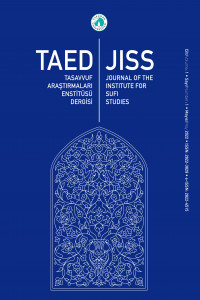THE FOREIGN AND IMAGINAL IN IBN ARABI’S TURJUMAN AL-ASHWAQ
When Ibn ‘Arabi (d. 543/1240) met the late Muslim philosopher and eminent theologian Ibn Rushd, popularly known in the West as Averroes, “he stood up in his place out of love and respect.” Then, he embraced the youth and exclaimed: “Yes!” To which the young mystic unhesitatingly responded: “Yes.” Some historical records informed us that the Aristotelian philosopher wanted to see Ibn ‘Arabi as he heard of his kashf (lit. unveiling) – a spiritual station he savoured during his spiritual retreat.
Anahtar Kelimeler:
Ibn ‘Arabi, TURJUMAN AL-ASHWAQ, Sufism
THE FOREIGN AND IMAGINAL IN IBN ARABI’S TURJUMAN AL-ASHWAQ
When Ibn ‘Arabi (d. 543/1240) met the late Muslim philosopher and eminent theologian Ibn Rushd, popularly known in the West as Averroes, “he stood up in his place out of love and respect.” Then, he embraced the youth and exclaimed: “Yes!” To which the young mystic unhesitatingly responded: “Yes.” Some historical records informed us that the Aristotelian philosopher wanted to see Ibn ‘Arabi as he heard of his kashf (lit. unveiling) – a spiritual station he savoured during his spiritual retreat.
Keywords:
IBN ARABI, TURJUMAN AL-ASHWAQ, SUFİSM,
___
- Knysh, Alexander. Islamic Mysticism: A Short History. Leiden: Brill, 2000.
- ISSN: 2822-3829
- Başlangıç: 2022
- Yayıncı: Üsküdar Üniversitesi
Sayıdaki Diğer Makaleler
SUFISM, ATTENTION and DIGITIZATION
Tek Fâil Doktrini: Cüneyd’in Tevhid Görüşü
Taliban Yönetimi Altındaki Afganistan’da Pasif Siyâset ve Mânevî Direniş
Şeyh Mustafa Dağıstani (1824-1909)
THE FOREIGN AND IMAGINAL IN IBN ARABI’S TURJUMAN AL-ASHWAQ
